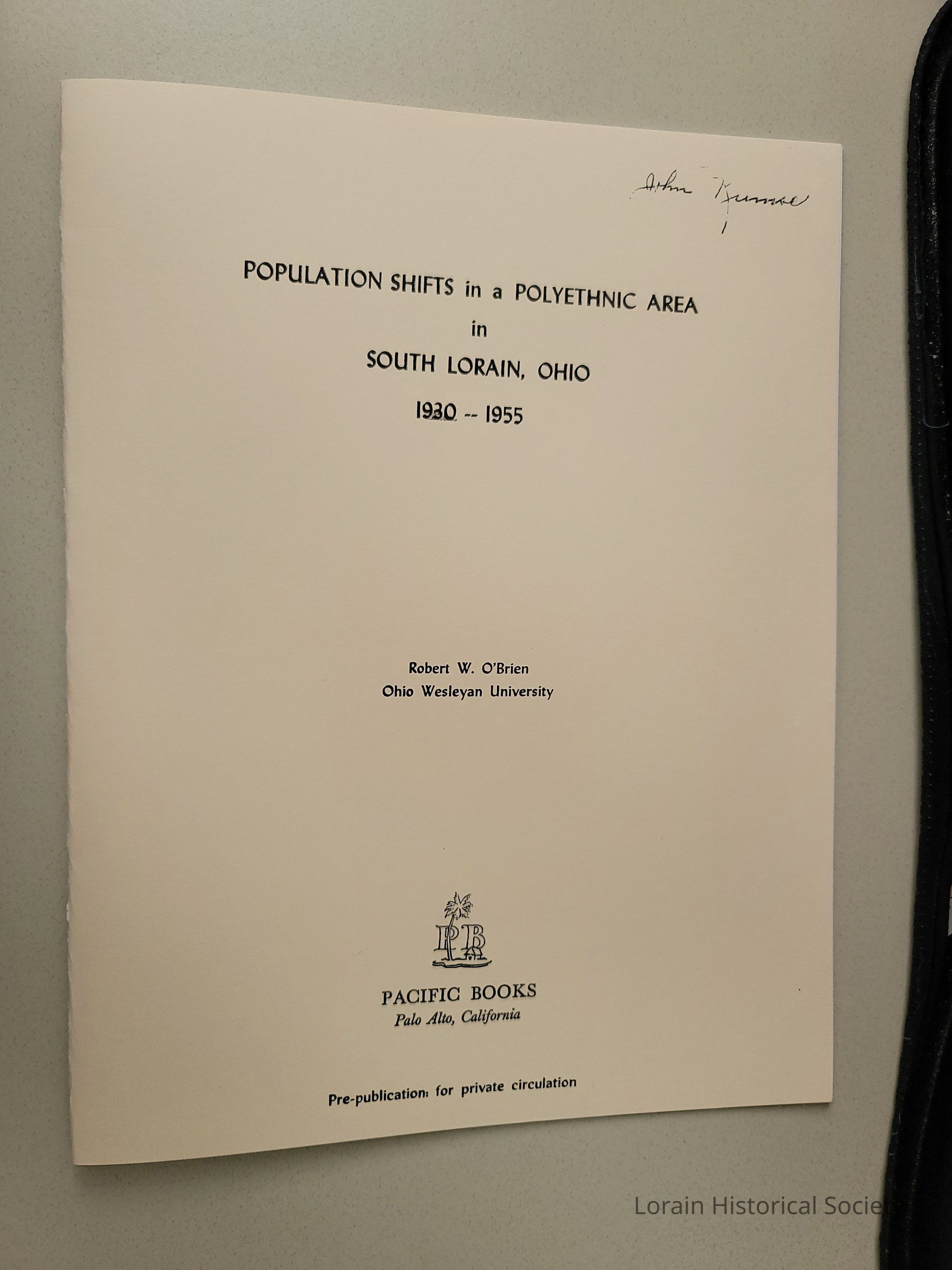Population Shifts in a Polyethnic Area
Archive
Lorain Historical Society

Description
Population Shifts in a Polyethnic Area in South Lorain, Ohio 1930-1955 Language demographics documenting areas of South Lorain where different languages were spoken and using maps compares changes in where languages were spoken between 1930 and 1955. Languages include: English (White, American) Slavic (Czecho-Slovakian) German Italian Slavic (Macedonian-Bulgarian) Greek Hungarian Romance (Mexican) Slavic (Polish) Romance (Roumanian [Romanian]) Slavic (Russian) Romance (Spanish) Slavic (Ukrainian) Slavic (Yugo-Slavian [Yugoslavia]) Puerto Rican (1955 only) Also includes, Distribution of Population in South Lorain by ethnic-nationality groups between 1930 and 1955: Hungarians Puerto Ricans American, White Yugo-Slavs Czecho-Slavs Mexicans German-Austrian American, Negro [Black, African-American} Polish Italian Ukrainian Russian Macedonian-Bulgarian Greek Roumanian [Romanian] English Spanish Irish Scotch Welsh Lituanian Dutch Syrian French Canadian Albanian Danish Swedish "Others" (Cuban, Finnish, Swiss, Dominican Republic, Belgians, and Latvian)
Entry/Object ID
R2021.38.02a
Context
"When Tom Johnson selected the southern section of Lorain, Ohio for his five million dollar steel plant in 1894, there began a process of in-migration of foreign-born and native workers which has resulted in one of the most diverse polyethnic areas in the United States." "In 1928 the Lorain Industrial Survey made an estimate of the various nationality groups for the entire city; this still left considerable doubt as to the distribution of the various ethnic groups in the 80 block area which then constituted South Lorain. IN 1930 with the help of 27 students from Oberlin College and under the joint sponsorship of my faculty committee...and the Neighborhood House Association of Lorain.., the writer made a census of nationality distribution and employment.
Collection
Latino Lorain History Project
Acquisition
Accession
2021.38
Archive Details
Creator
O'Brien, Robert W
Archive Notes
Ohio Wesleyan University; Pacific Books